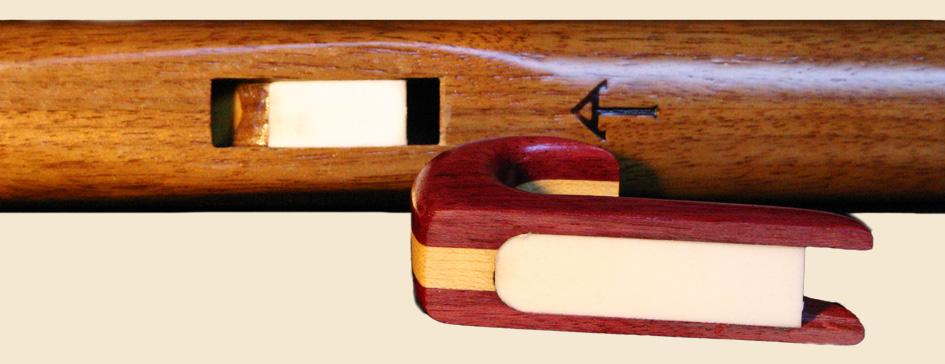Wet Out Protection
Wet Out and the Native American Style Flute
An annoying problem associated with playing the Native American style flute is called “wet out”. Wet out is caused by condensed moisture accumulating in the flue of the flute and impeding airflow. The difference in temperature between the humid air coming out of the lungs and the cooler inner surfaces of the flute causes condensation inside the slow air chamber of the flute. Droplets of condensed moisture move with air stream and impede the flow of air through the flue. This distorts the sound of the flute. When this happens you must stop playing, remove the bird, wipe and blow out the moisture and then replace the bird. It usually takes 10 or 15 minutes of continuous playing before a flute wets out. Wet out is more of a problem in colder conditions.
Some Native American style flute players are not bothered by wet out. For others it is a major problem. Because I was plagued by wet out myself I have done a lot of experimenting to find a solution.
A Solution for the Native American style Flute Wet Out

I have discovered that it is possible to stop wet out by lining the flue of the flute and the bottom of the bird with an absorbent hydrophilic plastic material. The plastic absorbs moisture like a sponge without changing dimension. Even when saturated the surface of the plastic has a surfactant quality. This prevents moisture from beading up on the surface of the plastic. Instead, it sheets off into the barrel of the flute. It is droplets of water in the flue that distort the flow of air. Sometimes airflow is stopped completely.
Installing wet out protection involves routing out a groove on the bottom of the bird and in the flue of the flute. Next, I seal the resulting raw wood surfaces with two coats of polyurethane sanding between coats. Finally, I must hand fit the plastic into the bird and flute and glue the pieces in place. Each piece of plastic must be carefully dimensioned. Because this is a time-consuming procedure I have to charge an additional $50 for wet out protection. It’s worth every penny.